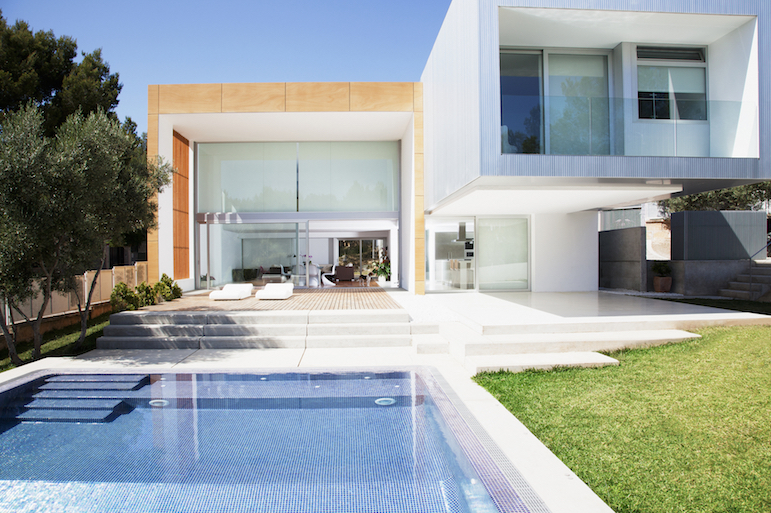Save Energy and Swim Cleaner with East End Green Pools

There are many things you can alter in your everyday life to save energy and “go green.” Many of these are obvious—everyone’s heard of the benefits of electric cars—but there are some ways to preserve energy you may not have considered. Take, for example, your pool—with new methods for both powering and cleaning your pool, you can help the environment. Sheryl Heather, owner of Spring & Summer Activities, has helped spearhead the green pool push on the East End. With more than 35 years of experience in the pool industry, Heather has many insights to share.
What makes a pool “green?”
Energy efficient, firstly, and people prefer swimming now in fewer chemicals. Those are the two components. The No. 1 thing to do is to use a variable speed pump. In the towns of Southampton and East Hampton, those are the only pumps we can use on new pools. They have a magnetic motor. We think about pump speed in RPM [revolutions per minute]. They use a third of the electricity. PSEG gives a $350 rebate when installed by an approved installer, and east of the Shinnecock Canal, there’s an additional rebate. Your pool pump is typically the second biggest energy hog.
When did the push for green pools start?
In 2008, in the Town of Southampton when the town wanted to ban pool heaters. The pool industry sat down with the Town and the idea was that you’d heat your pool with solar energy. You would put a solar system on your pool and then use a fossil fuel heater as a backup. Realistically, we’re in the Hamptons—people would go crazy, and secondly, not everyone can heat their pool with solar energy. We got together with Southampton Business Alliance, and said that not every pool has a heater but everyone has a pump. It was good because we were able to pull the pool industry and businesses together. So we went with the pump. Every pool has a pump. With these rebates, when somebody’s pump breaks, with the instant energy savings, it’s an easy thing to explain to consumers, even people who aren’t thinking of being green.
And another good thing is that for high-end pools, that rebate is good for all the pumps in the pool.
Talk about using fewer chemicals.
Everybody dreams of swimming in a chemical-free pool, and you can do that with a pond or lake. A pool, though, is self-contained. We need to sanitize it. In my opinion, chlorine is still the best sanitizer. There are alternative systems, like ozonators, that type of thing. They are not all 100% efficient. There’s typically need for chlorine backup to really get the water clean and bacteria-free. The most popular way to lower your chemical level is converting your pool to salt. That uses much lower levels of chlorine and you’re able to adjust the chlorine level to lowest levels of chlorine to keep it sanitized. You need to get bacteria out of the pool.
With an electronic chlorine generator, the water is getting a mild electronic charge and is inherently more comfortable to swim in. You’re generating free chlorine, and the whole time the pump is running you’re generating low levels of chlorine so you’re sanitizing the water all the time, and the water tends to stay a little more in balance. You’re not using chlorine tablets anymore. You still might need to shock the pool, but it’s a lower level of chlorine. They’re getting popular.
There are folks out here who are building pond pools, where the water is more like a fish tank going through a natural filtration. A few people were starting that a few years ago, but you have to understand that there’s an offset. You’re not going to have that sparkling blue water—you’re filtering a pond.
Have green pools become more standard in recent years?
Yes, and every year an increasing number of customers convert to salt because they want to lower the chlorine level, and when it’s time to replace a pump, they replace it with an energy efficient pump.
For more information on Spring & Summer Activities, visit springandsummeract.com.



